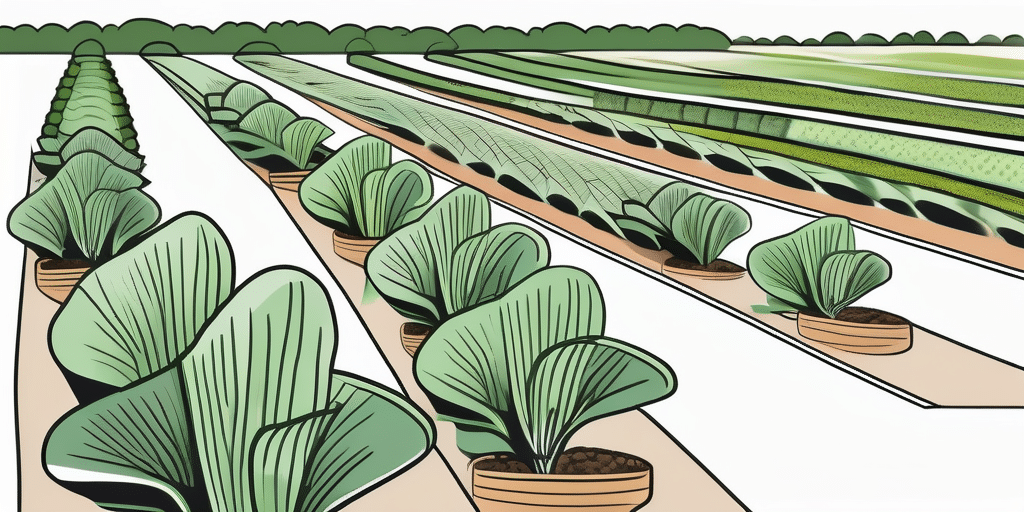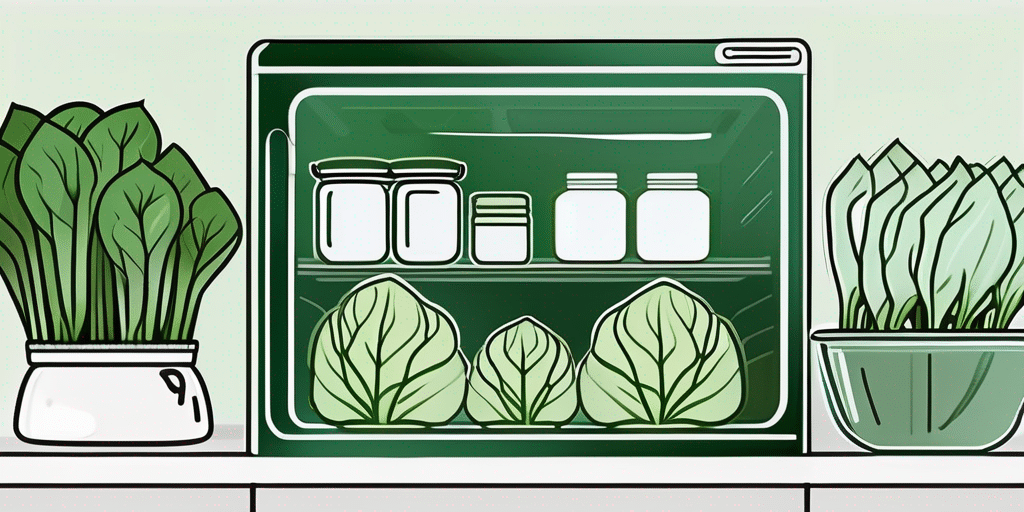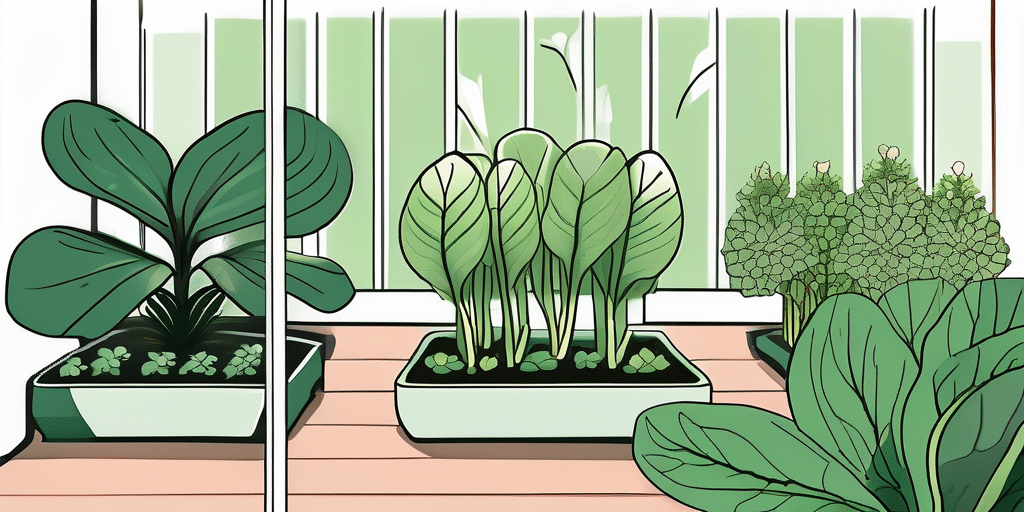Bok choy, also known as Chinese cabbage, is a leafy green vegetable that’s a staple in many Asian cuisines. It’s packed with vitamins and nutrients, and it has a unique flavor that can add a fresh twist to a variety of dishes. But like all fresh produce, bok choy doesn’t last forever. If you want to keep your bok choy fresh and tasty for as long as possible, you need to know how to store and preserve it properly.
Understanding Bok Choy
Before we dive into the specifics of storing and preserving bok choy, it’s important to understand a little bit about this unique vegetable. Bok choy is a type of Chinese cabbage that doesn’t form a head like traditional cabbage. Instead, it has long, leafy stalks that are typically green or white. The leaves are dark green and slightly crinkly, and they have a mild, slightly peppery flavor.
According to the USDA, bok choy is low in calories but high in vitamins A, C, and K. It’s also a good source of calcium, magnesium, and potassium. This makes it a healthy addition to any diet, and a great ingredient to have on hand in your kitchen.
Storing Fresh Bok Choy
Now that you understand a bit more about bok choy, let’s talk about how to store it. Proper storage is key to keeping your bok choy fresh and tasty for as long as possible.
Refrigeration
The best way to store fresh bok choy is in the refrigerator. This will help to preserve its freshness and extend its shelf life. Here’s how to do it:
- Don’t wash the bok choy before you store it. Moisture can cause it to spoil more quickly.
- Place the bok choy in a plastic bag. Don’t seal the bag completely – leave it slightly open to allow for some airflow.
- Store the bag in the crisper drawer of your refrigerator. This is the best place for storing fresh produce because it maintains a consistent temperature and humidity level.
- Check the bok choy regularly and remove any leaves that are starting to wilt or turn yellow. This will help to prevent the rest of the bok choy from spoiling.
Stored this way, fresh bok choy should last for about a week. However, it’s always best to use it as soon as possible to ensure the best flavor and nutritional value.
Freezing
If you can’t use your bok choy within a week, you might want to consider freezing it. Freezing bok choy can help to preserve its nutritional value and extend its shelf life even further. Here’s how to do it:
- Wash the bok choy thoroughly and remove any damaged leaves.
- Blanch the bok choy. This involves boiling it for a short period of time and then plunging it into ice water. This helps to preserve the color, flavor, and nutritional value of the bok choy.
- Drain the bok choy thoroughly and pat it dry.
- Place the bok choy in a freezer-safe bag or container. Try to remove as much air as possible to prevent freezer burn.
- Label the bag or container with the date and place it in the freezer.
Stored this way, frozen bok choy should last for about a year. However, it’s always best to use it within a few months to ensure the best flavor and nutritional value.
Preserving Bok Choy
Aside from refrigeration and freezing, there are other ways to preserve bok choy. These methods can help to extend its shelf life even further, and they can also add a unique twist to its flavor.
Pickling
Pickling is a popular method of preserving many types of vegetables, and bok choy is no exception. Pickled bok choy has a tangy, flavorful taste that can add a unique twist to a variety of dishes. Here’s how to do it:
- Wash the bok choy thoroughly and remove any damaged leaves.
- Cut the bok choy into pieces of your desired size.
- Prepare a pickling solution. This typically involves vinegar, water, sugar, and pickling spices, but you can adjust the ingredients to suit your taste.
- Place the bok choy in a jar and pour the pickling solution over it.
- Seal the jar and store it in the refrigerator.
Pickled bok choy should be ready to eat after about a week, and it should last for several months in the refrigerator.
Fermenting
Fermenting is another popular method of preserving vegetables, and it’s a great way to preserve bok choy. Fermented bok choy, also known as kimchi, is a staple in Korean cuisine, and it’s packed with probiotics that can benefit your gut health. Here’s how to do it:
- Wash the bok choy thoroughly and remove any damaged leaves.
- Cut the bok choy into pieces of your desired size.
- Prepare a brine solution. This typically involves water and salt, but you can also add other ingredients like garlic, ginger, and chili pepper to enhance the flavor.
- Place the bok choy in a jar and pour the brine solution over it.
- Seal the jar and store it at room temperature for about a week. After that, move it to the refrigerator.
Fermented bok choy should be ready to eat after about a week, and it should last for several months in the refrigerator.
Conclusion
Storing and preserving bok choy properly can help to extend its shelf life and preserve its nutritional value. Whether you choose to refrigerate, freeze, pickle, or ferment your bok choy, these methods can help to keep it fresh and tasty for as long as possible. So the next time you find yourself with a surplus of bok choy, don’t let it go to waste – store it or preserve it instead!
Keep Your Garden Thriving
Now that you’ve mastered the art of storing and preserving bok choy, why not take your gardening skills to the next level? Subscribe for free to How to Grow Everything and learn how to build the garden of your dreams! Receive personalized gardening advice tailored to your grow zone and experience level. Enjoy the best gardening tips, special offers, and insights delivered straight to your inbox – with no spam, just valuable information from our family to yours. Start growing your perfect garden today!






